Philips PUS8359 in 50" is a fairly simple television, yet sufficiently advanced for a large portion of consumers. Its biggest distinguishing feature (as well as the entire brand) is the Ambilight backlighting, which at this price point is definitely an added value and something that may encourage a purchase. In this price range, it's hard to find anything that will give us flawless picture quality, although we can look for units that offer something more. And in our opinion, this tested television is precisely that. In this context, we pay particular attention to the quality of tonal transitions, colour reproduction after calibration, and the television's performance when connected to a computer. Thanks to its low input lag, a casual gaming session will be quite enjoyable. However, we must also point out the unit's drawbacks. Without a doubt, these will be low luminance in HDR content and narrow coverage of the DCI-P3 colour space. Although it’s worth noting that the dynamic tone mapping feature works very effectively. We will also briefly mention the contrast and black levels, which, while not exceptional, are definitely better than in units based on IPS/ADS panels. The operating system of the television can be considered one of the better ones, although it is in development and lacks many features, which we will discuss more in a dedicated paragraph. It also does not have as wide a library of applications as its competitors, although this will likely change soon. Who is the PUS8359 for? One could say it’s for anyone looking for a balance between quality and price.
- Matching (Score)
- Our verdict
- TV appearance
- Where to buy
- Contrast and black detail
- HDR effect quality
- Factory color reproduction
- Color reproduction after calibration
- Smoothness of tonal transitions
- Image scaling and smoothness of tonal transitions
- Blur and motion smoothness
- Console compatibility and gaming features
- Input lag
- Compatibility with PC
- Viewing angles
- TV efficiency during daytime
- Details about the matrix
- TV features
- Apps
- Playing files from USB
- Sound
Philips PUS8359 (VA) vs LG OLED C5
Direct compare
Check the best price offer:
LG OLED C5PUS8349 / PUS8359
C5 / C54 / C5ELB / C51
Available screen sizes: 50”

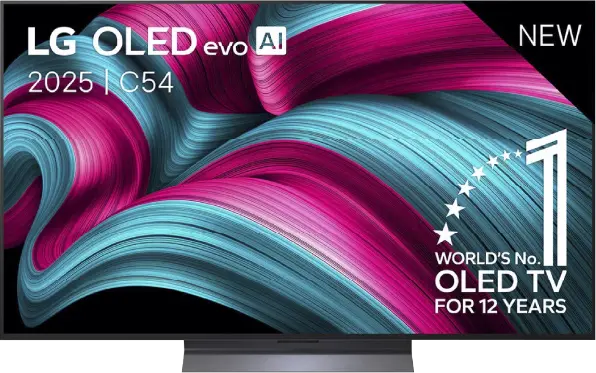
Panel type: LCD VA
Resolution: 3840x2160
System: Titan OS
Model year: 2024
Complete the survey to find out the result

Panel type: WRGB OLED
Resolution: 3840x2160
System: WebOS
Model year: 2025
Complete the survey to find out the result

Overall rating
5.4
8.2
Movies and series in UHD quality
5.2
8.5
Classic TV, YouTube
5.4
8.9
Sports broadcasts (TV and apps)
4.5
8.6
Gaming on console
6.4
9.4
TV as a computer monitor
6.0
8.6
Watching in bright light
4.7
6.2
Utility functions
5.3
7.9
Apps
6.2
9.1
Sound quality
6.1
7.2
Complete the survey to find out what fits your preferences
Advantages
Colour representation after calibration
Dynamic tone mapping function - recovers details that are too bright for the television
Smooth tonal transitions
Very good compatibility with computers and consoles - low input lag, chroma 4:4:4
Great black and endless contrast thanks to the OLED panel
Above-average brightness (for an OLED TV)
Nearly reference-quality picture after calibration
Full suite of features for gamers: 4xHDMI 2.1, low input lag, HGiG, VRR and more
Very good motion smoothness – 144 Hz OLED panel
Intuitive and modern WebOS system
Convenient Magic remote control with a gyroscope
Disadvantages
Low brightness of HDR materials
Missing a significant number of essential applications
Poor viewing angles
Different versions of the remote in derivative models – it's hard to predict which version we'll get
Average reflection damping – this may be an issue under very bright light
No support for DTS:X – an external amplifier is required for full support of this format
Our verdict
LG C5 is a very successful continuation, and in several aspects, even a step forward compared to last year's C4 model. The biggest change is the significantly higher brightness – for the first time in the history of the C series, the barrier of 1000 nits has been exceeded, which significantly improves the quality of HDR effects. Both movies and TV shows look more dynamic as a result, and bright scenes finally have the appropriate “shine.” After calibration, the picture quality is almost reference-level, and one gets the impression that we are dealing with equipment much more expensive than its price suggests. C5 is also one of the best choices for gamers – four full HDMI 2.1 ports, low input lag, support for VRR, G-Sync, and correctly implemented HGiG. Additionally, the 144 Hz panel makes not only gaming but also watching sports pure pleasure. The convenient WebOS system and the Magic remote with cursor control functionality deserve a mention as well – everything works smoothly and intuitively. This is a television that you simply want to use.
However, there are a few minor reservations. This year, LG decided to abandon support for DTS codecs, which may be troublesome for people using physical media and Blu-ray film collections. It's also worth noting the confusion regarding the different versions of the remote – depending on the model designation, we may receive a completely different remote than the one we held during our tests. Despite these few comments, LG C5 is a television that makes an excellent impression in almost every respect. Brightness, colours, gaming features, fluidity of the image, and overall build quality make it one of the best OLEDs in its class.
TV appearance




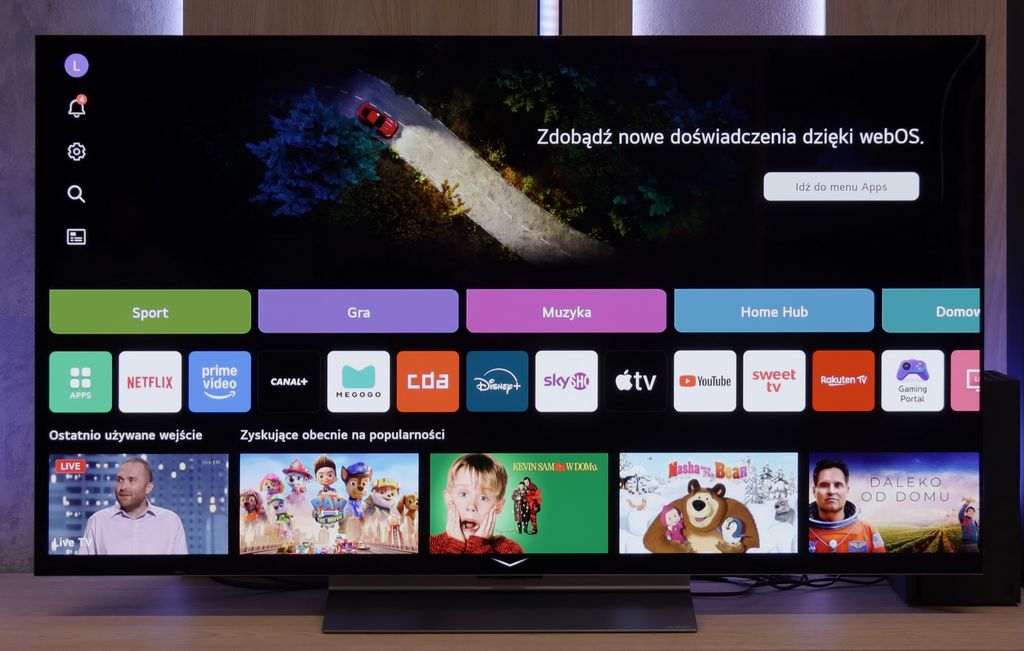
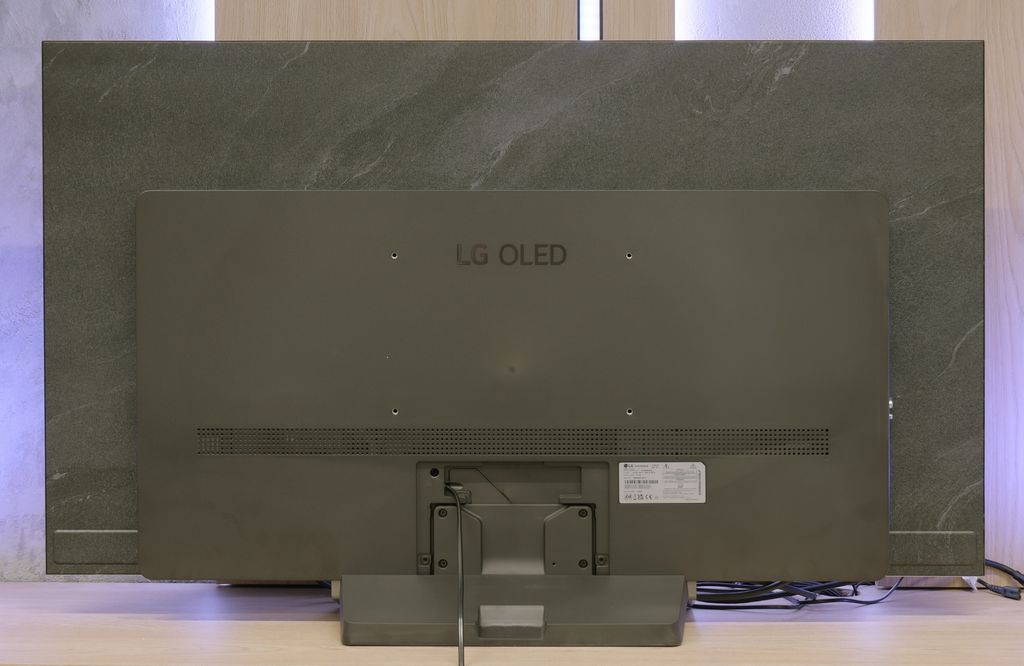
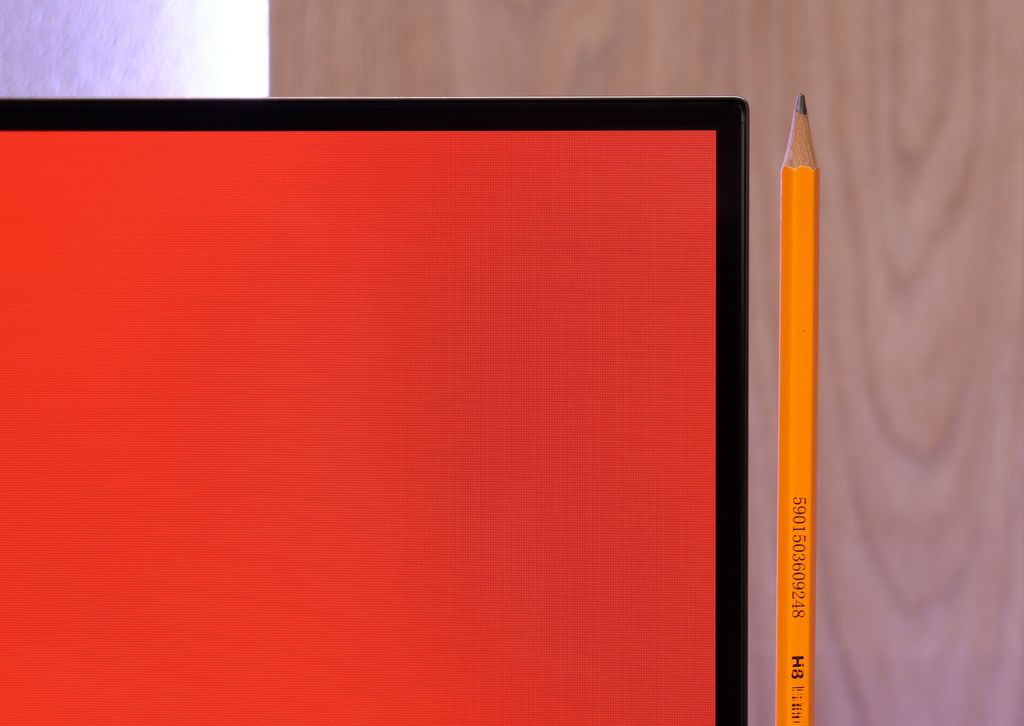
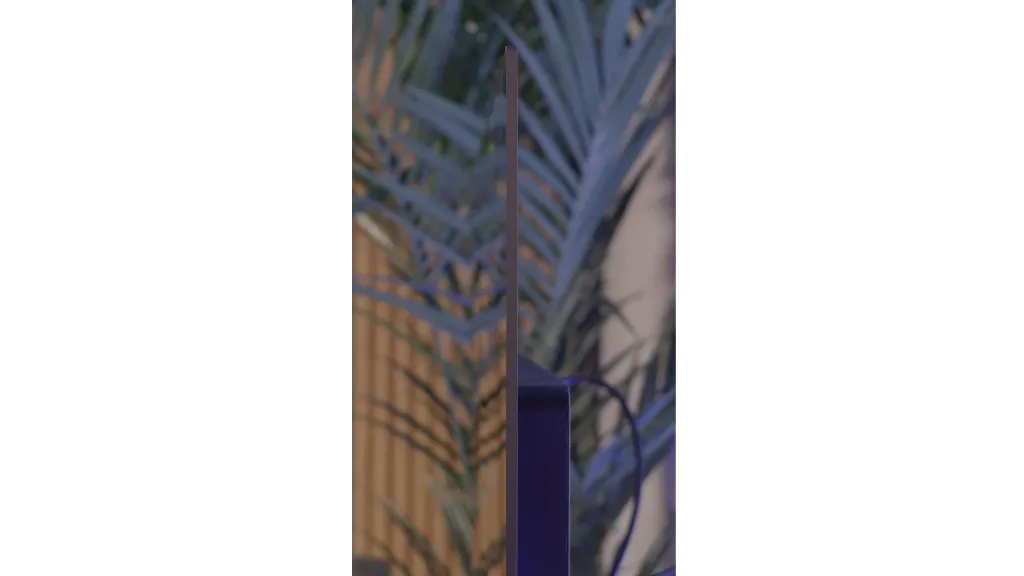
Contrast and black detail
5.6/10
10/10
Local dimming function: No
Contrast:

Result
4,400:1

Result
4,950:1

Result
4,500:1

Result
5,650:1

Result
3,800:1

Result
∞:1

Result
∞:1

Result
∞:1

Result
∞:1

Result
∞:1
Halo effect and black detail visibility:

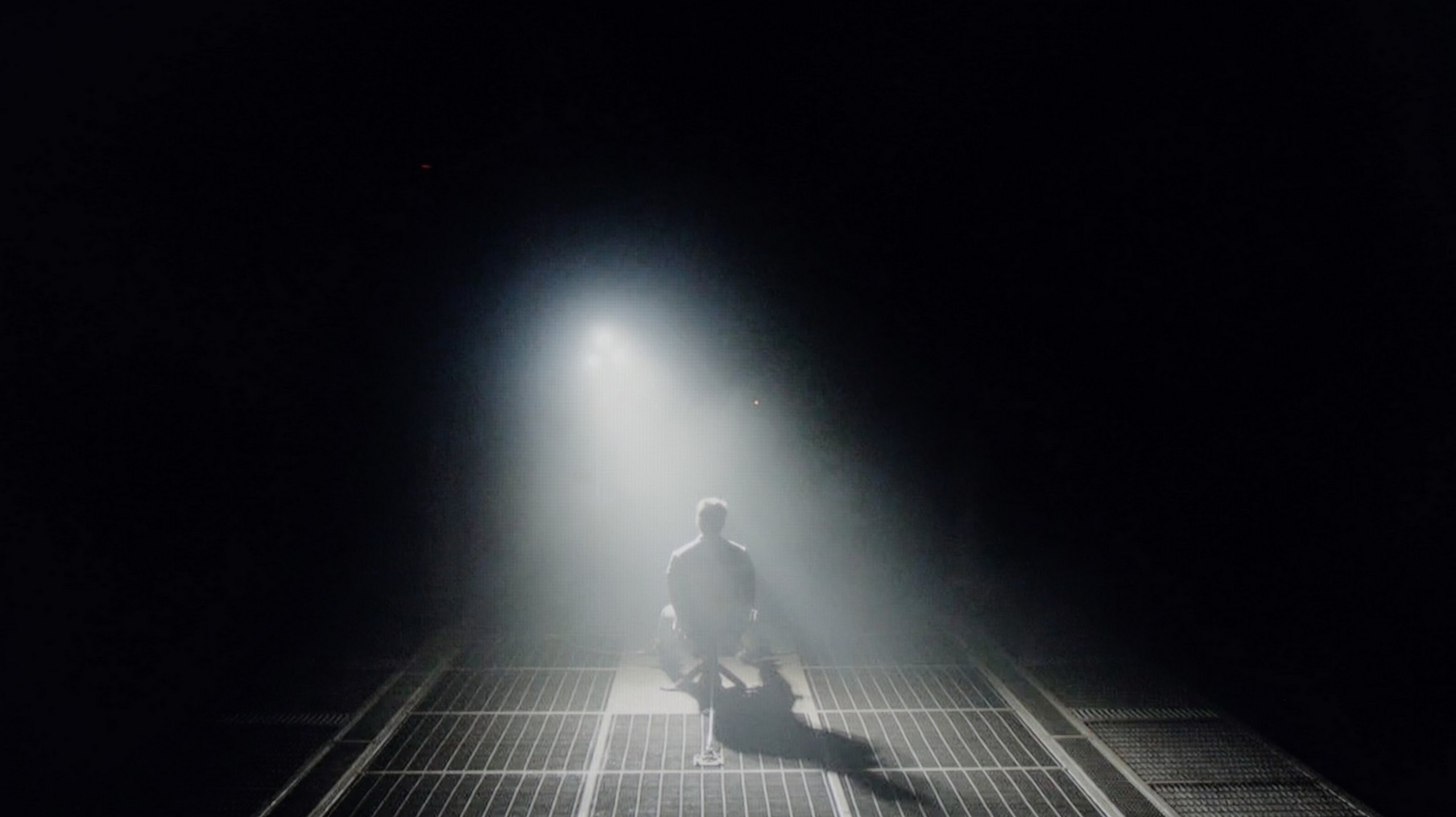
Philips PUS8359/12 in the 50-inch version is equipped with a VA panel. We highlight this quite strongly, as the manufacturer is known for intermittently using IPS/ADS panels depending on the diagonal size. This is particularly important in the context of contrast and black levels, which are the primary criteria in assessing image quality. The panel itself uses direct LED backlighting; however, it has not been supported by any local dimming system, which is rather obvious when considering the device's price range. Nevertheless, the use of this type of screen allows for several rows of better black levels and contrast compared to the aforementioned panels that do not have advanced backlighting systems. The simple design of the television has positively affected the visibility of details in the blacks. Our first test scene from the film "Oblivion" showcased quite good blacks, but also excellent separation of lights, which is not an easy task even for much more expensive units. The second material prepared from the film Sicario 2 also presented itself decently. Although due to construction flaws, some light bleeding can be noticed, the details themselves are well visible, and it's hard to criticize them. The fact remains, the black levels could be deeper.
In the category of black and contrast, the LG C5 fits perfectly into what we've come to expect from OLED TVs – it's simply ideal. Thanks to the use of an organic matrix (WOLED), each pixel lights up independently, resulting in infinite contrast and perfect black. There are no halos, streaks, or other typical LCD TV artifacts here. Details in bright parts of the image are excellently visible, and watching with the lights off is pure enjoyment. If someone is looking for a TV for evening viewing with great contrast – the C5 is a very strong contender.
HDR effect quality
4.6/10
7.2/10
Luminance measurements in HDR:

Result
281 nit

Result
280 nit

Result
324 nit

Result
290 nit

Result
320 nit

Result
1079 nit

Result
1059 nit

Result
1120 nit

Result
1094 nit

Result
707 nit
Scene from the movie “Pan” (about 2800 nits)


Scene from the movie “Billy Lynn” (about 1100 nits)


Static HDR10


HDR luminance chart:
LG OLED C5
Luminancja HDR
Luminance of RGB colors
Philips PUS8359 (VA)
Luminancja HDR
Luminance of RGB colors
Philips PUS8359 didn't impress us with its performance in HDR materials. This model is capable of generating a maximum brightness of 320 nits, and often even less. Such results, combined with the lack of support for HDR Dolby Vision, mean that the image will be significantly darker compared to the source material. Therefore, it would be more beneficial for this television to play SDR content. This is also suggested by the quite low coverage of the DCI-P3 colour gamut at 83%, resulting in significant colour deficiencies. The fact remains that the television supports an HDR format based on dynamic metadata; however, HDR10+ is such a niche format that it doesn't offer any major advantages.
LG C5 has finally done what we've been waiting for years in the C series – it exceeds 1000 nits of brightness! This is a significant change compared to previous models in the series and very important – because most HDR content on streaming platforms is created around such luminance today. The image finally has the right "glow," and details in the highlights look as they should even without the use of dynamic metadata. However, there are scenes where the C5, like most OLED TVs, has certain issues. Especially when the screen has to light up entirely. In our test sequences, like the bright scene from the movie The Meg, brightness noticeably drops. Don't get us wrong, this result is not bad; it’s more of a reminder that OLED technology still has its limitations. Year by year, they are getting smaller, but they still exist.
Now, what about the colours? They are very good. Although the C5 doesn't match OLEDs with QD-OLED or Tandem RGB panels, its coverage of the DCI-P3 gamut at 97% and 73% of BT.2020 will satisfy even the more demanding viewers. The colours are saturated, natural, and very consistent in HDR materials.
Factory color reproduction
4/10
8.2/10


Factory Mode
After calibration


Factory Mode
After calibration
The best factory mode in terms of fidelity to the source material was "Film". This is what we used during our tests. Just like every other factory mode in televisions, it had its drawbacks. So we'll check what exactly was wrong with both SDR and HDR materials. In both cases, the white balance exhibited an excessive dominance of the green and red colour combination. This created a yellow tint spreading across the entire image, causing issues such as yellowed whites and problems with skin tones. This state of affairs was perfectly illustrated on the "ColourChecker" palette, where each of the tested samples was pushed towards its warmer counterparts. The foundation of the image is primarily contrast and black. These are represented by gamma charts and the EOTF curve. Looking at the first one, we can see a true rollercoaster, as both elevated and lowered gamma can be observed. The heavily elevated gamma caused visibility issues in black levels, whereas the lowered gamma resulted in a dramatic reduction in contrast. In this context, the EOTF curve performed significantly better, as it only slightly brightened the image.
LG C5, like other TVs we tested, was checked in the best possible factory mode – which remains the Filmmaker Mode. And here we have good news: in SDR materials, LG has once again done a solid job. The white balance and colour reproduction right out of the box are at a very high level. Most errors – both in balance and in the Colour Checker test – did not exceed a ΔE value of 3, which is the threshold above which differences become visible to the naked eye. Such factory settings are what we'd like to see in many more TVs!
However, the situation is different for HDR content, which is what the C series was truly designed for. Here, the C5 performs weaker. An excessive amount of blue in the white balance causes the image to appear distinctly cooler – which affects things like unnaturally pale skin tones or somewhat shifted tonality of the entire scene. Fortunately, LG provides very precise calibration tools, and we – as always – made use of them.
Color reproduction after calibration
5/10
9.4/10




Philips provides a wide range of image calibration tools in both its higher-end and budget models. We utilised these tools and got to work, which wasn’t as easy as many of you might think. While we managed to model the white balance, significantly improve the gamma, and refine the EOTF curve in both cases, the deltaE errors remained exceptionally high. There are several reasons for this situation, which are directly related to the low coverage of the DCI-P3 colour gamut and the maximum brightness of the unit in HDR material.
We must honestly admit – in the case of the LG C5, it took very little to achieve an almost perfect image. After carrying out calibration, we managed to achieve compliance with reference screens at a level that impresses even compared to significantly more expensive models. The image after our adjustments looks exactly as filmmakers and series creators would want – with no colour distortion, natural depth, and subtle plasticity. LG has done a great job this year regarding factory settings and calibration potential. Hats off!
Smoothness of tonal transitions
7.4/10
8.2/10












The fluidity of gradation in PUS8359 is at a good level. Practically every scene has preserved tonal transitions. The most difficult scene, which is the second from the film "The Green Knight", turned out not to be the proverbial "killer" and showed that the tested television, given its price range, performs excellently. The only thing we can "pick at" is the darkest scenes, where some inconsistencies can be seen here and there, but this is rather selective. Nonetheless, we rate the fluidity of tonal transitions very well. However, we must mention that this feature is not available in HDR materials.
WOLED TVs have not been known for perfect smoothness in tonal transitions until now. It was often noticeable to see delicate bands between colours – especially in darker parts of the image – which gave the impression that the colours do not transition smoothly, but rather slightly "step". This year, LG has made significant progress. In the C5 model, this issue has been largely eliminated. Indeed, in very dark scenes, you can still see subtle boundaries between colours, but they are non-intrusive enough that hardly anyone except for more demanding viewers will notice them. For most users, the smoothness of tonal transitions in the C5 will simply be impeccable.
Image scaling and smoothness of tonal transitions
6/10
7.8/10
Smooth transition function

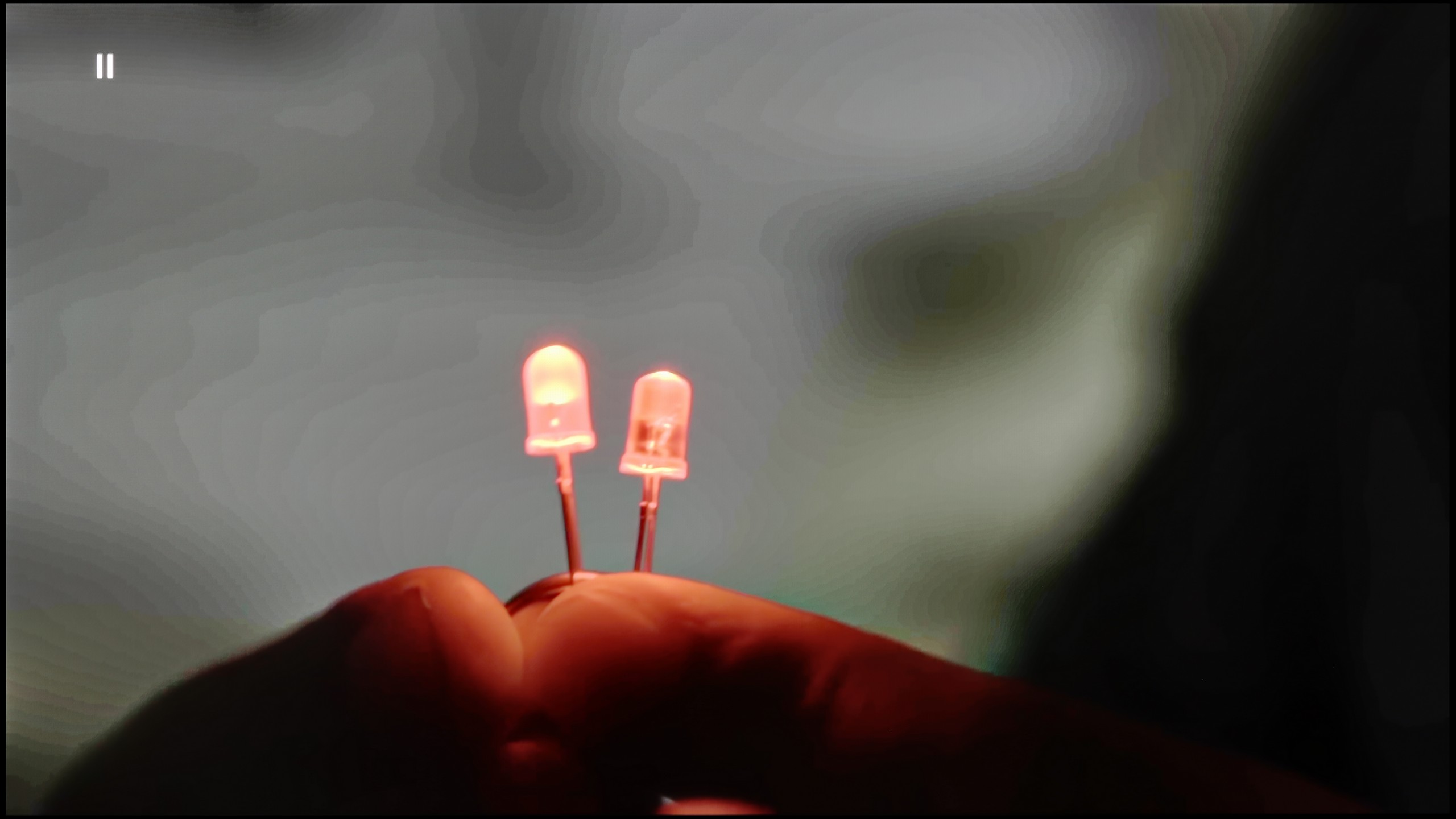
Image without overscan on the SD signal


In this paragraph, we will look at two functionalities. We will once again take a look at the feature responsible for tonal transitions, but we will also check how the television handles image scaling. The option responsible for smooth gradation is called "Distortion Reduction." As we have established, it quite effectively smooths out inconsistencies. However, we must point out two things: we cannot enable it for HDR material, and it blurs details in films.
The tested television does not boast the best image scaling. The overall blurriness of the image is quite noticeable, but what’s worse, it blurs details. This is particularly evident on the branches and hair of the model. There is also a characteristic white halo around the character.
LG C5 handles lower quality materials exceptionally well. One of the main issues that older WOLEDs faced was posterisation – unwanted “steps” in colour transitions. The C5 utilises a system function that smooths these transitions, and it works surprisingly effectively. The banding effect is nearly completely eliminated, and the image gains consistency. Compared to last year's model, we feel that this function operates slightly weaker – but the good news is that it doesn't compromise the image structure. Film grain, textures, and details remain on the screen – nothing is forcefully smoothed out.
The C5 also excels at enhancing the quality of older recordings. Thanks to the α9 Gen6 (8th gen) processor, "scaling to 4K" is impressively solid. The image is clear, details are sharp, and the only minor drawback might be a slightly noticeable aliasing on some edges. However, there is no problem with overscan here – the image is not artificially cropped or shifted, which is a significant plus and still not a given.
Blur and motion smoothness
3.8/10
8.5/10

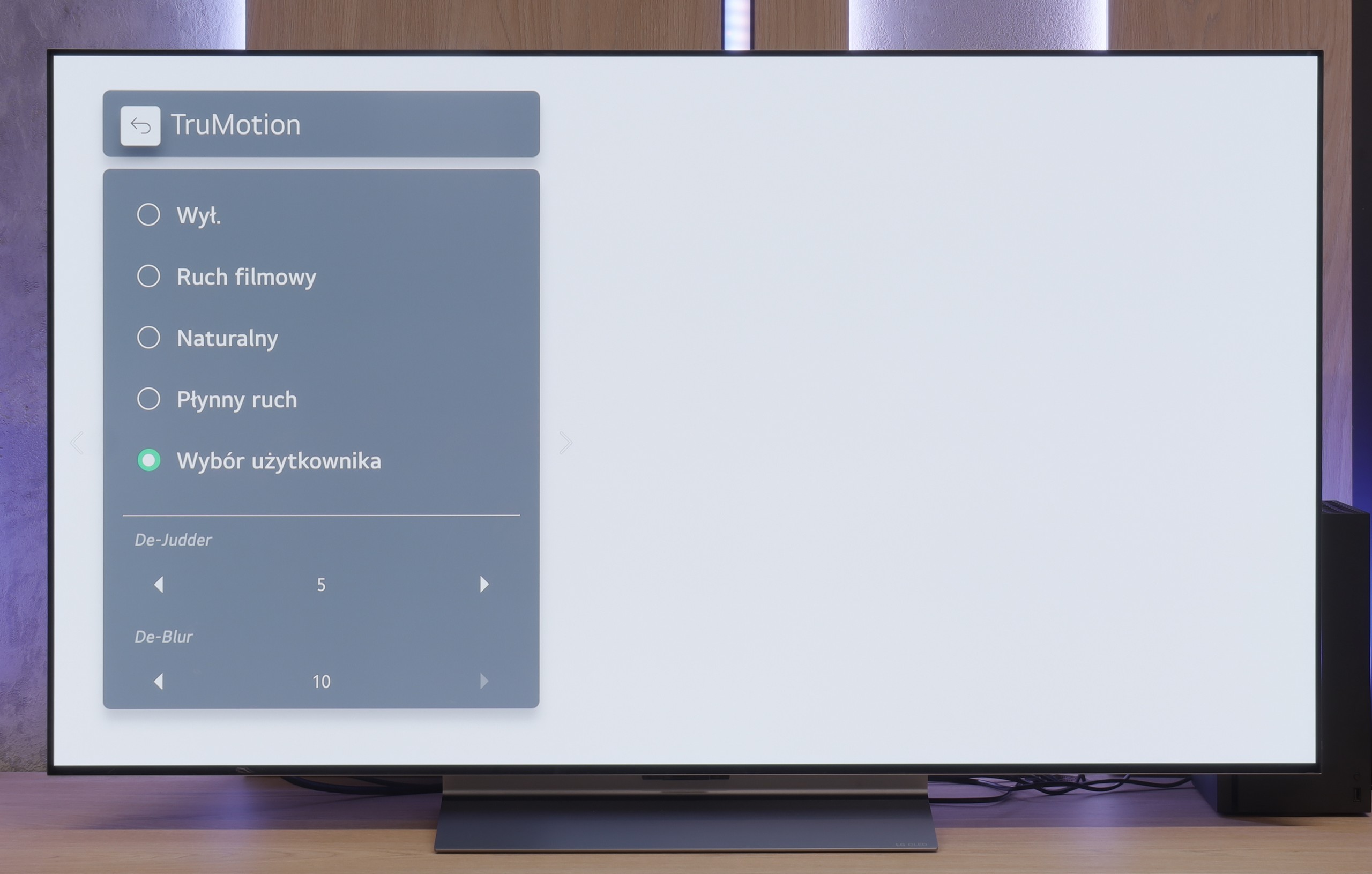
Blur (native resolution, maximum refresh rate):






Philips PUS8359 will not be the best television for sports. The reason for this is the lack of implementation of even the basic motion smoothing feature, which was to be expected given the price of the device. We also note that we are dealing with a VA panel, whose sharpness does not stand at the highest level by itself. This type of panel is mainly associated with high contrast, which comes with a rather slow response time, as we can clearly read from the matrix analysis results. As you can see, from the pictures captured in fast motion, the image is blurred typically for this type of panel. While it may not be the ideal option, it can conditionally be used for watching sports; however, one must keep in mind the less-than-sharp motion. It is worth mentioning that movies will be characterised by judder since the television does not possess any, not even the simplest, motion smoother.
The LG C5 is equipped with a 144 Hz display, and this, combined with virtually zero response time of the OLED pixels, makes it one of the best screens for watching dynamic content. It doesn’t matter whether it’s sports, fast-paced games, or just action – the image is razor sharp.
And what about movies at 24 frames? LG has thought of that too. The built-in "TruMotion" smoother allows you to adjust the picture to your own preferences. The “de-judder” slider increases fluidity in films, while “de-blur” subtly reduces motion blur – although to be honest, it’s practically invisible here.
Console compatibility and gaming features
4.7/10
10/10
- ALLM
- VRR
- VRR range6040 - 144Hz
- Dolby Vision Game Mode
- Correct implementation of HGIG
- 1080p@120Hz
- 1440p@120Hz
- 4K@120Hz
- Game bar

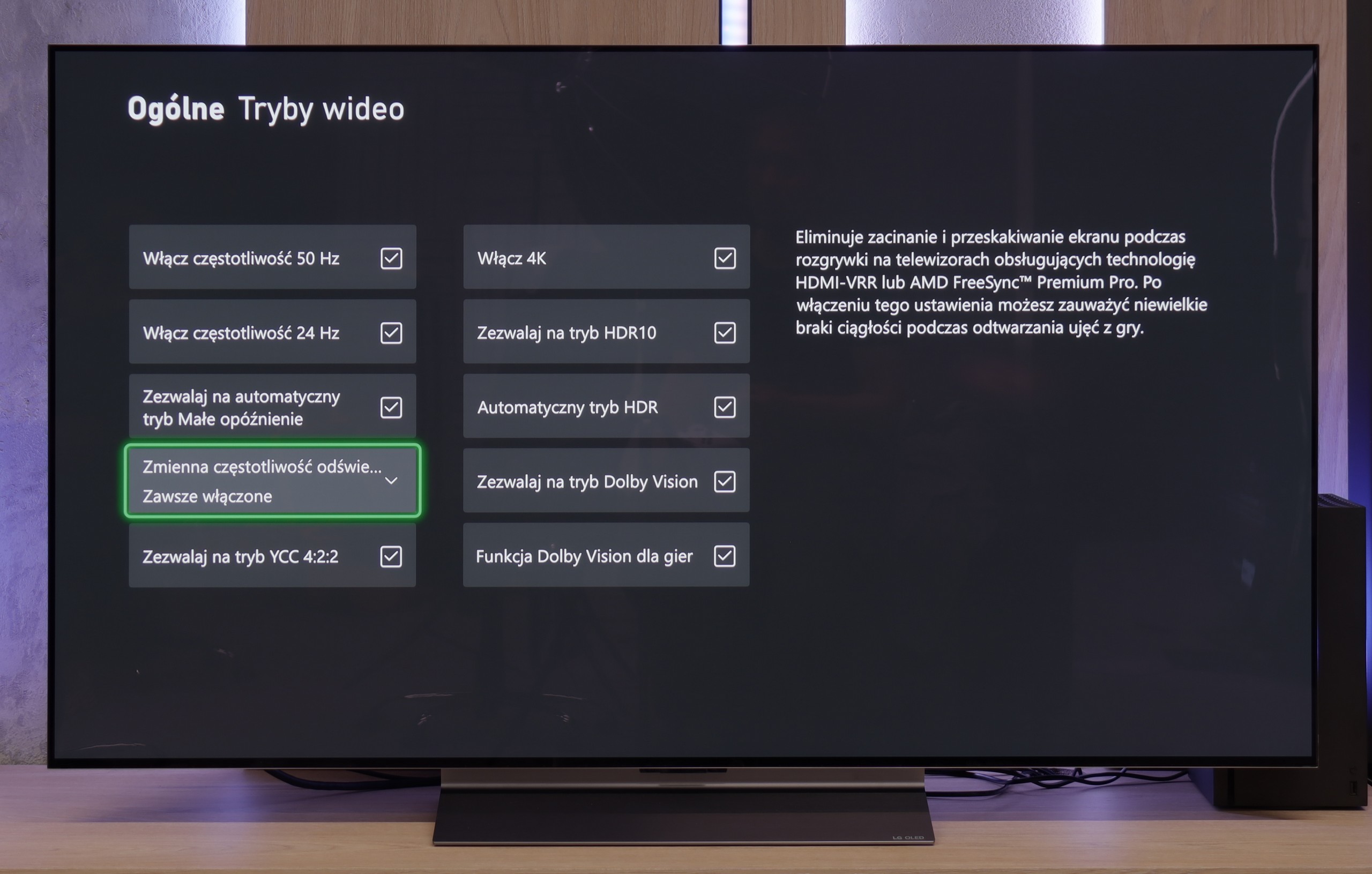

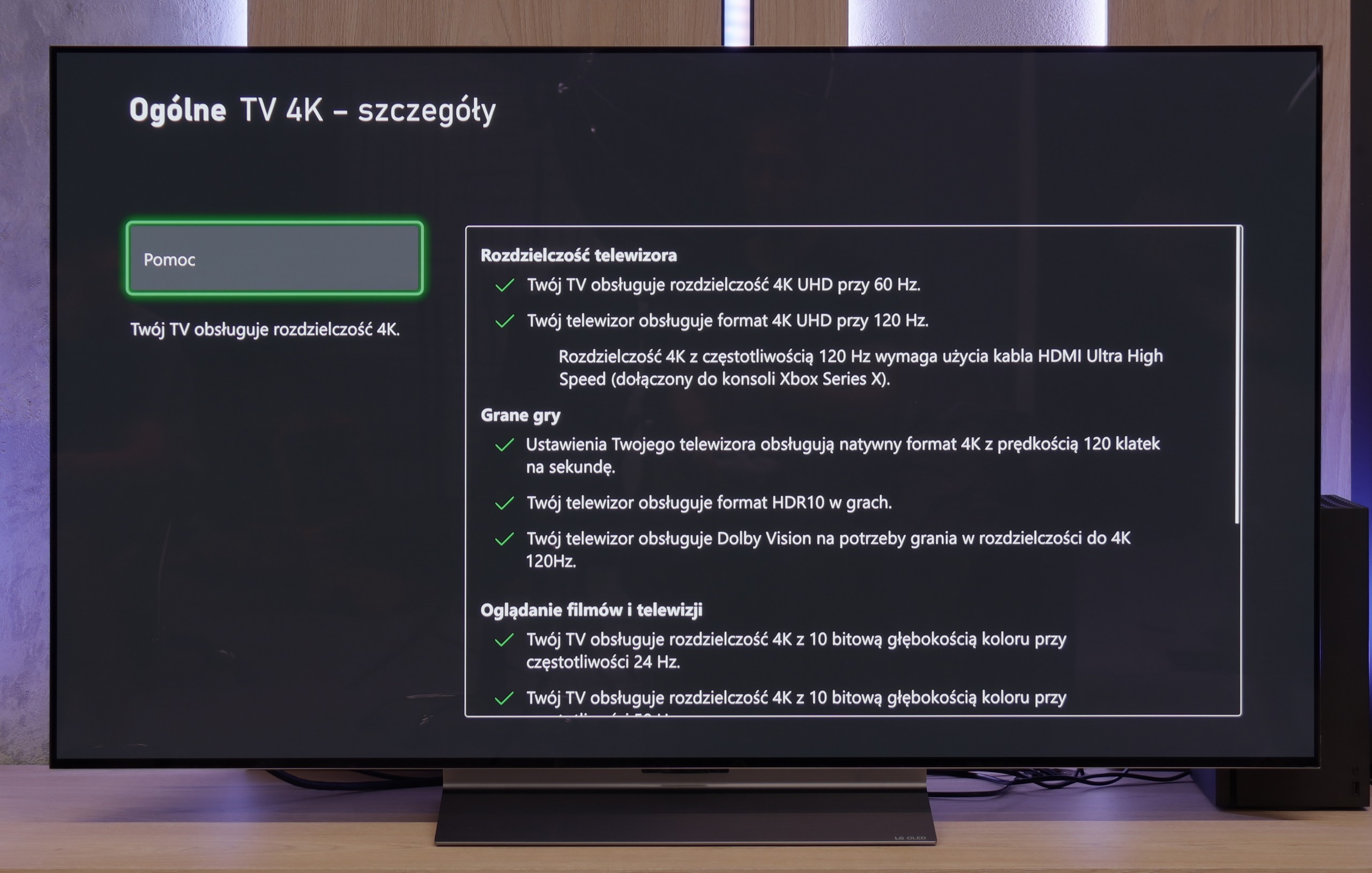

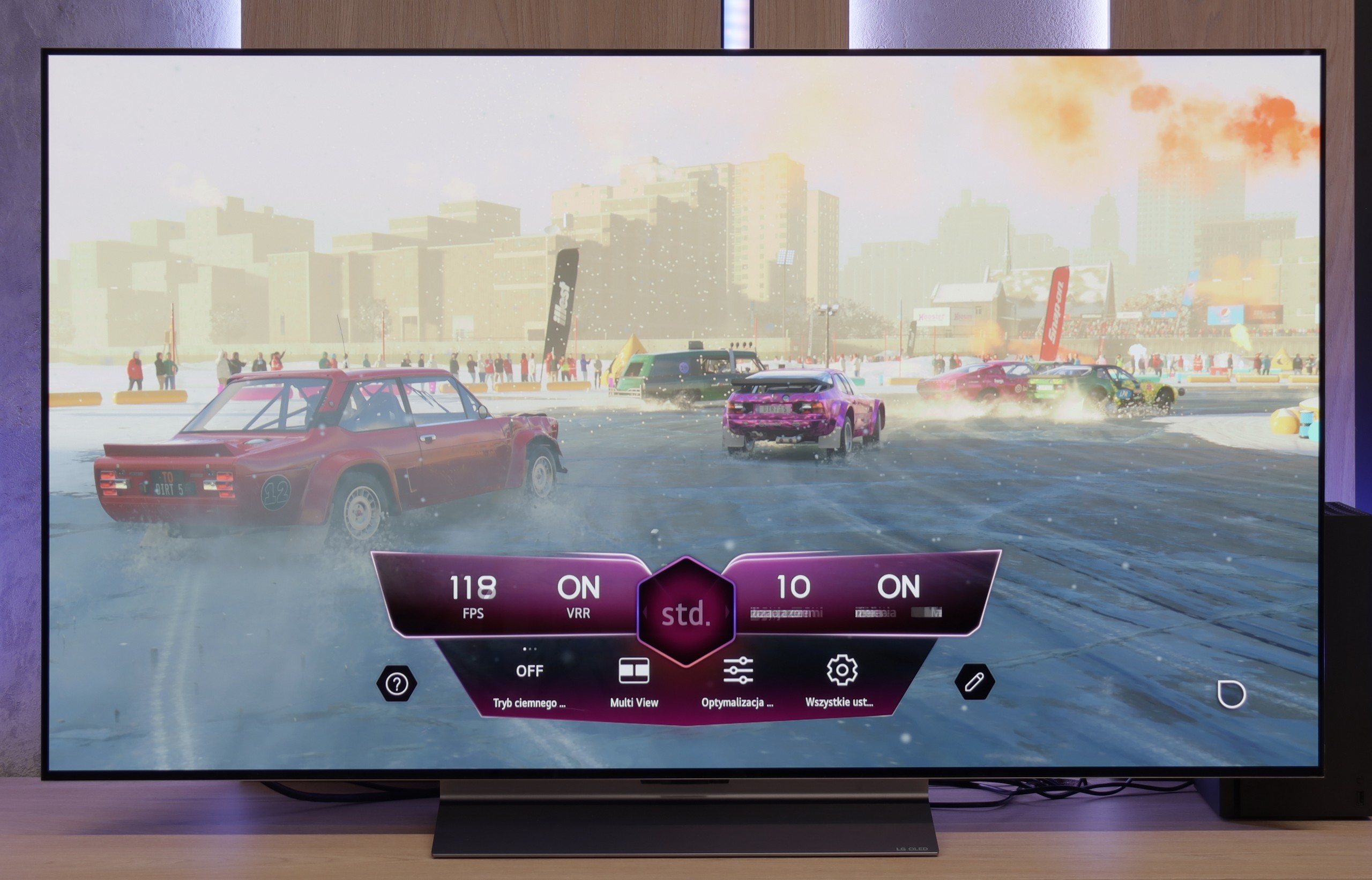

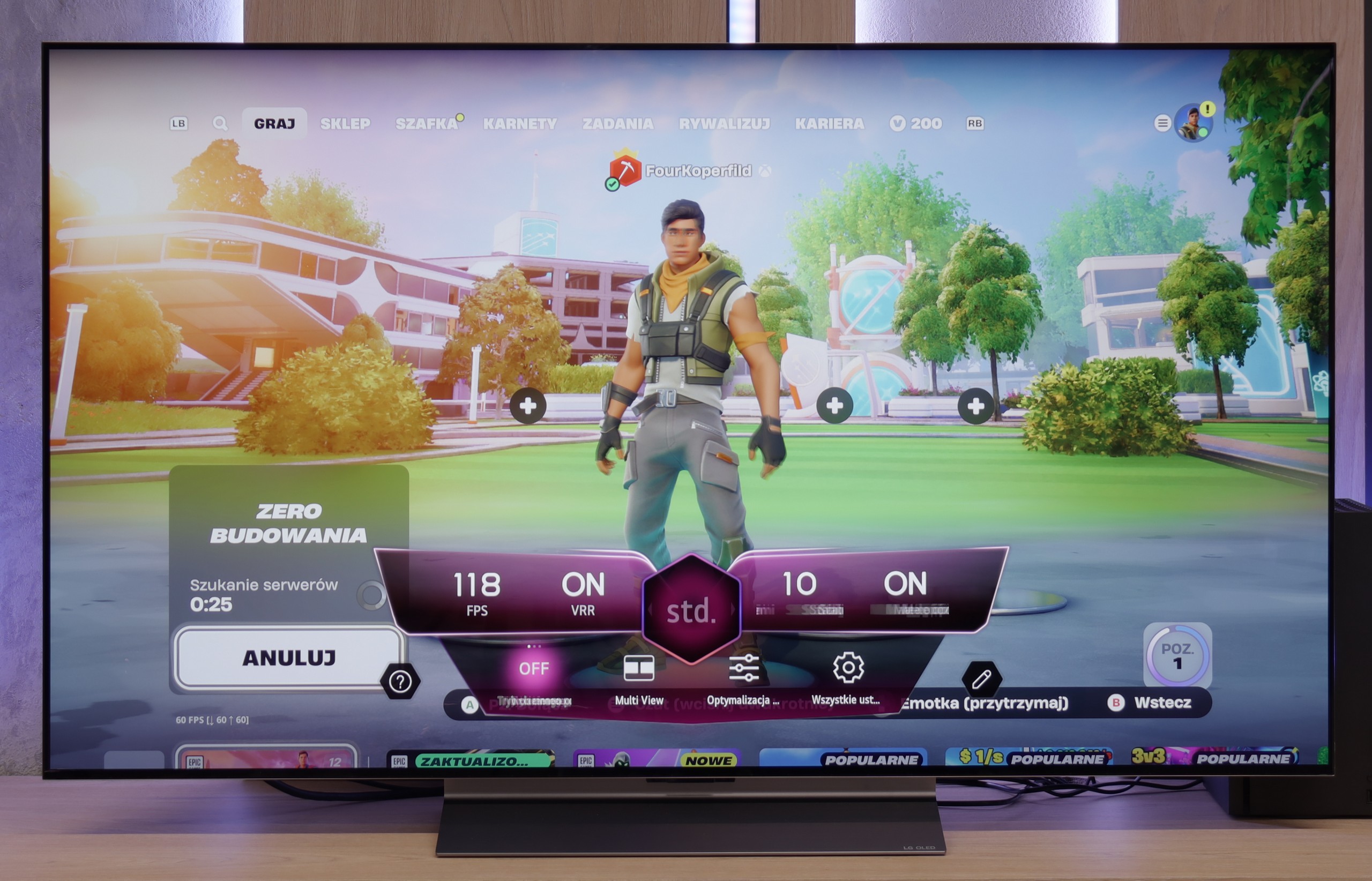
It won’t be a surprise if we say that Philips PUS8359/12 only has the most basic support for consoles. Once we connect the console, we can expect features like VRR and ALLM. This is quite pleasing for the former, as life has shown that even in more expensive units, there can be issues with this. A nice touch is the implementation of a special GameBar that allows changing settings on the "fly", so we won't have to exit the gameplay and become unnecessarily distracted. This feature also allows for adapting the gameplay to the needs of individuals with disabilities, which will certainly be extremely beneficial.
LG C5 is a TV designed with gamers in mind – and there's not a hint of exaggeration in that. It's hard to find anything to criticise here. We have a refresh rate of 144 Hz, full support for VRR, ALLM, and as many as four HDMI 2.1 ports with full bandwidth of 48 Gb/s. For those who have an Xbox, PS5, Nintendo, and a gaming PC in one room – no limitations, everything can be connected without any hassle.
Configuring HDR for gaming is also straightforward. The TV correctly supports the HGiG mode, which allows you to achieve an image that aligns with the creators' intentions. For those interested, there is also Dolby Vision in the Gaming version, although we still recommend HGiG as the most predictable and "clean" variant of HDR in games.
It also includes the Game Bar, which is a "command centre" for the gamer. Everything important, from VRR settings, picture modes, to frame rate information – is at our fingertips. The interface is simple and clear. It may look like something out of a space simulator, but it serves its purpose and just works; exactly as it should.
C5 is truly a complete package for any gamer.
Input lag
10/10
10/10
SDR
HDR
Dolby Vision
The measured input lag when connected to the console was very good, with nothing to pick at. Both at FHD and 4K settings, we recorded delays of 12ms, and when adding the HDR format to the higher resolution, the lag dropped to 11ms. Each of these results should be considered more than satisfactory, as such a level allows for gameplay that is practically free of delays between controller, eye, and screen.
The response time of the LG C5 to our movements with the controller is exemplary. Regardless of the chosen resolution or frame rate – the lag is so low that it is virtually unnoticeable in practice. Playing on this television is simply a pure pleasure. Some delay is introduced by the Dolby Vision mode, which shouldn't be surprising – this applies to almost every television on the market equipped with this mode. Nevertheless, even with Dolby Vision active, the input lag remains low enough that gameplay is still smooth and responsive.
Compatibility with PC
6/10
8.6/10

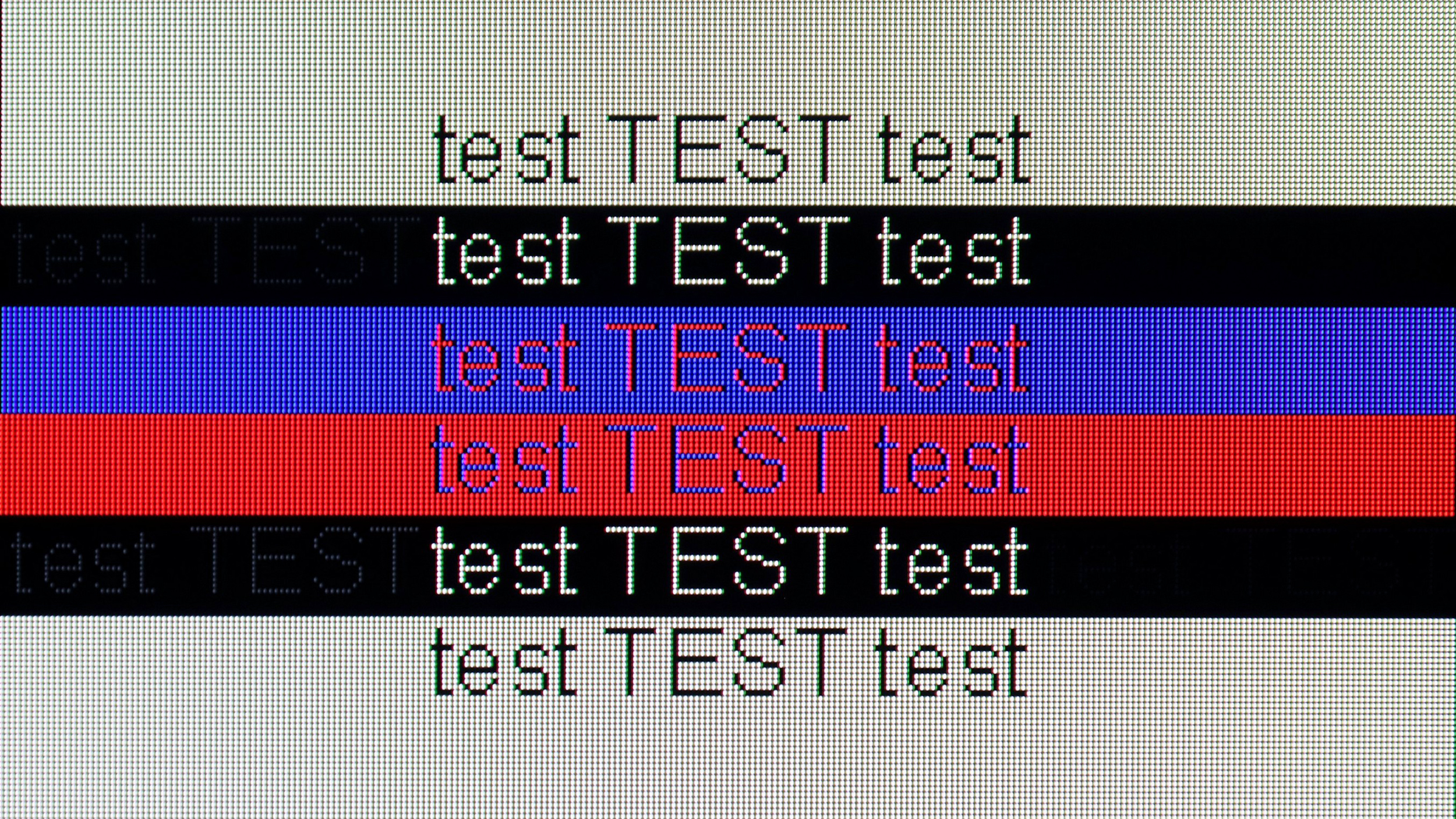
Connecting the Philips PUS8359 to a computer won't create major complications in terms of gaming. The latency is at a very good level, and working at 4K HDR settings was associated with an 11 ms input lag, which is an imperceptible value on the line from eye to screen to mouse. The tested TV also supports chroma 4:4:4, making work with text files convenient. This model does not support G-Sync and offers a refresh rate of 60 Hz, which can be a significant drawback for PC gamers. Therefore, the gaming rating is lower, although the device performs excellently in everyday office tasks.
C5 – as we mentioned – is a television created for gamers, so playing even on a computer is an absolute pleasure. The 144 Hz panel, low input lag, and original G-Sync certification just confirm this.
When it comes to work – it's also very good. The fonts are readable, the interface clear, however, it's worth remembering that we are dealing with a WOLED panel and a WRGB subpixel arrangement (slight shadows visible behind the font). So, if someone plans to place the C5 on a desk in smaller sizes like 42 or 48 inches for everyday office work, it’s worth checking it out for yourself first. For occasional desktop use and primarily for gaming – there are no reasons to be concerned.
Viewing angles
3.4/10
7.4/10
The decrease in brightness at a 45-degree angle is 65%. This means that even a slight shift from the center of the screen can cause discomfort related to color degradation and image fading. This is rather a characteristic feature of the vast majority of VA panels that lack an angle coating.
The viewing angles on the LG C5 are nearly ideal. While they fall slightly short of technologies like QD-OLED or WOLED with MLA micro lenses, the picture quality at wide angles still makes a great impression. Colours remain vibrant, and the screen doesn't lose much brightness even when set at a more challenging angle.
Addressing questions that circulated last year regarding the C4 model – in the case of the C5, we did not notice any green tinting, pinking, or other effects that can be read about online. The picture at an angle looked really clear.
TV efficiency during daytime
4.7/10
6.2/10

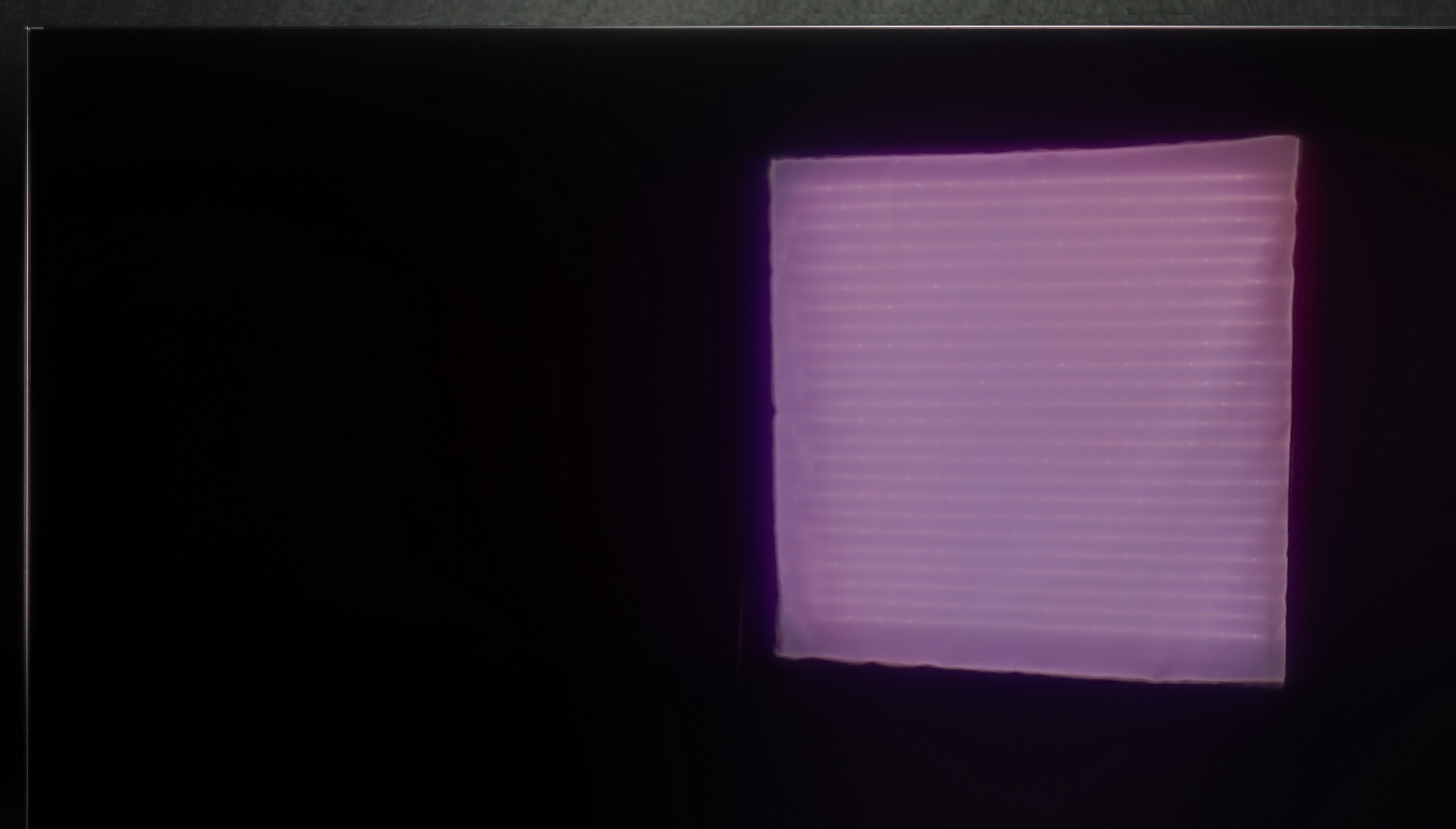

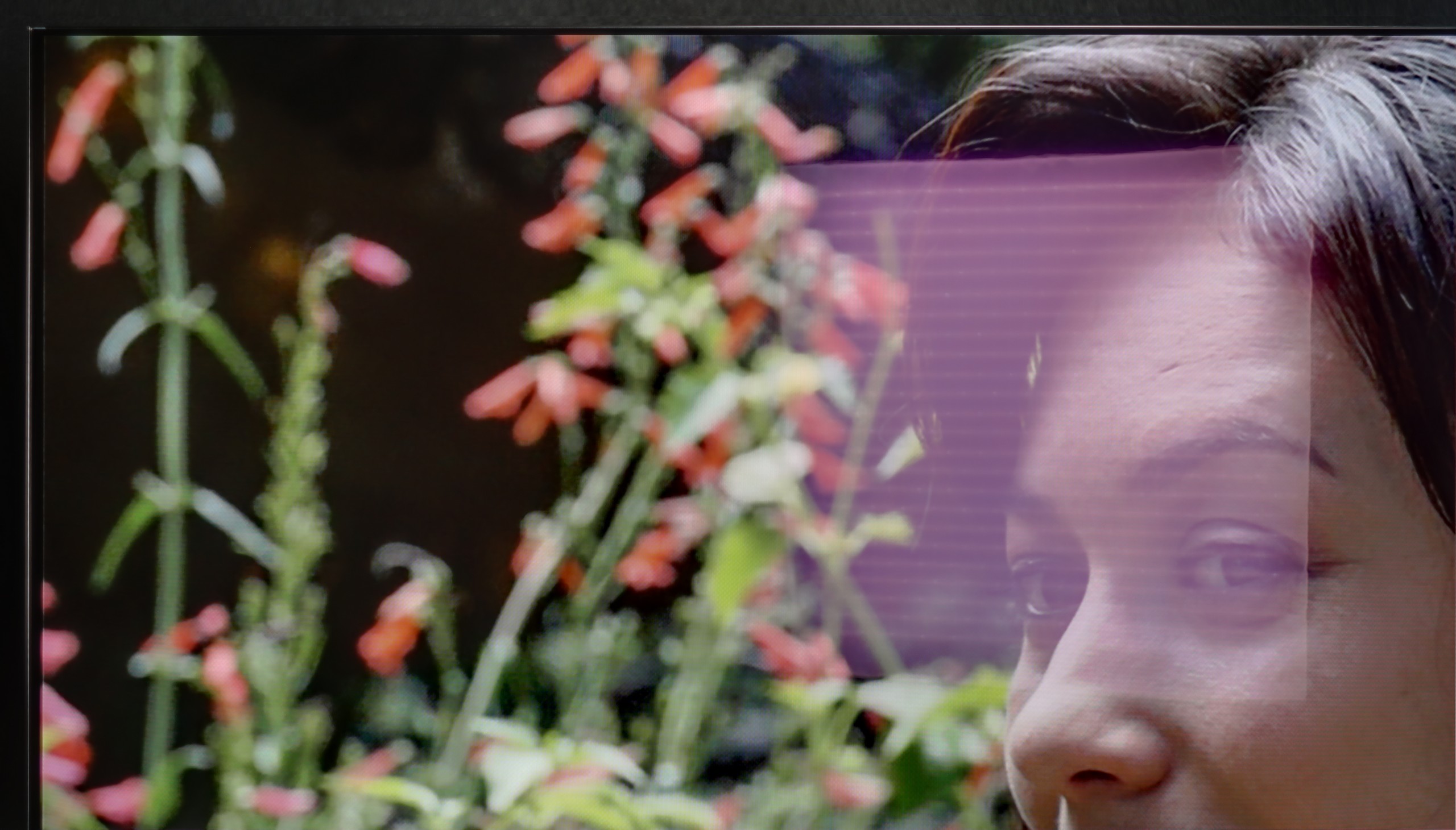
Matrix brightness
Average luminance SDR
LG OLED C5: 435 cd/m2
Philips PUS8359 (VA): 318 cd/m2
The screen Philips PUS8359/12 has a satin finish. This type of panel finish allows for quite good performance in keeping light reflections in check and provides fairly comfortable viewing of the television during the day. It’s worth mentioning that the maximum brightness of the television in SDR content is about 320 nits, which is a reasonable result, especially since the brightness is maintained even at 100% screen white fill.
LG C5 is one of the brighter OLED TVs on the market, so it should perform well in moderately bright rooms without major issues. The average brightness in SDR mode is around 450 nits – a value sufficient for the picture to remain readable even during the day. Importantly, the black does not lose depth and does not turn "grey," which can still be a problem with QD-OLED panels.
Reflections, however, may pose a greater challenge. The WOLED panel used in the LG C5 has a glossy coating typical of this technology, which only partially diffuses reflections. In a well-lit living room with large windows, you can see your reflection on the screen – slightly muted but still visible. In a very sunlit room, it may turn out that blinds or curtains are necessary to fully enjoy the great picture quality.
Details about the matrix
Subpixel Structure:

Panel uniformity and thermal imaging:
TV features
5.3/10
7.9/10
- HDMI inputs3 x HDMI 2.0, 0 x HDMI 2.10 x HDMI 2.0, 4 x HDMI 2.1 48Gbps
- Other inputsIR (remote)
- OutputsToslink (Optical audio), eARC (HDMI), ARC (HDMI), Mini-Jack (Headphones)Toslink (Optical audio), eARC (HDMI), ARC (HDMI)
- Network InterfacesWi-Fi 2.4GHz, Wi-Fi 5GHz, Ethernet (LAN) 100MbpsWi-Fi 2.4GHz, Wi-Fi 5GHz, Ethernet (LAN) 100Mbps
- TV receptionDVB-T, DVB-T2, DVB-S, DVB-S2, DVB-CDVB-T, DVB-T2, DVB-S, DVB-S2, DVB-C
Classic features:
- Recording to USB (terrestrial TV)
- Recording programming
- Picture in Picture (PiP)
- RF remote control (no need to aim at the screen)
- Backlit remote control
- Teletext
- Audio only mode
- Possibility to connect Bluetooth headphones to the TV
- Possibility to simultaneously use Bluetooth headphones and the TV speaker
Smart features:
- AirPlay
- Screen mirroring (Windows Miracast)
- Wyszukiwanie głosowe
- Voice search in native language
- Ability to connect a keyboard and mouse



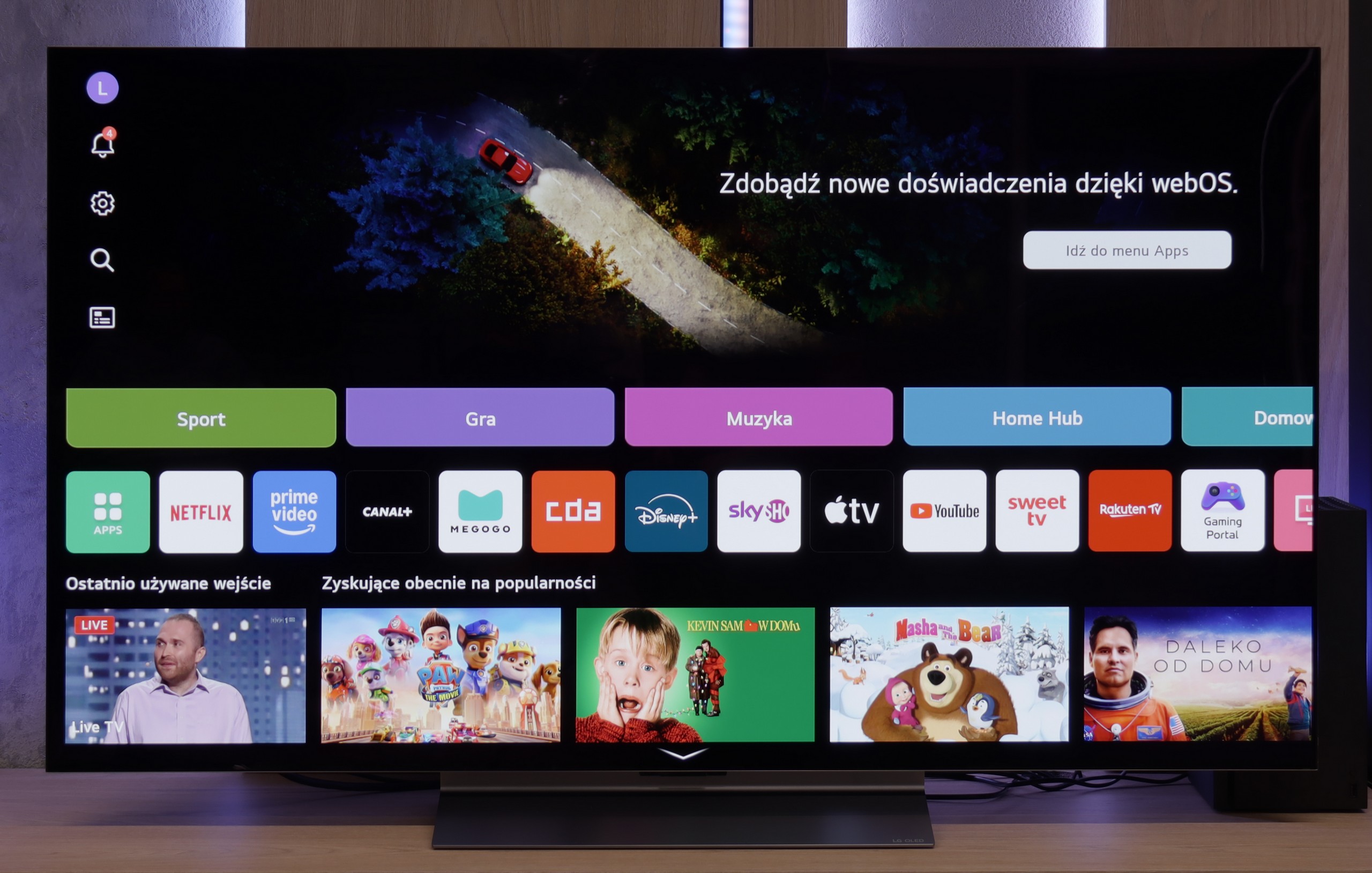
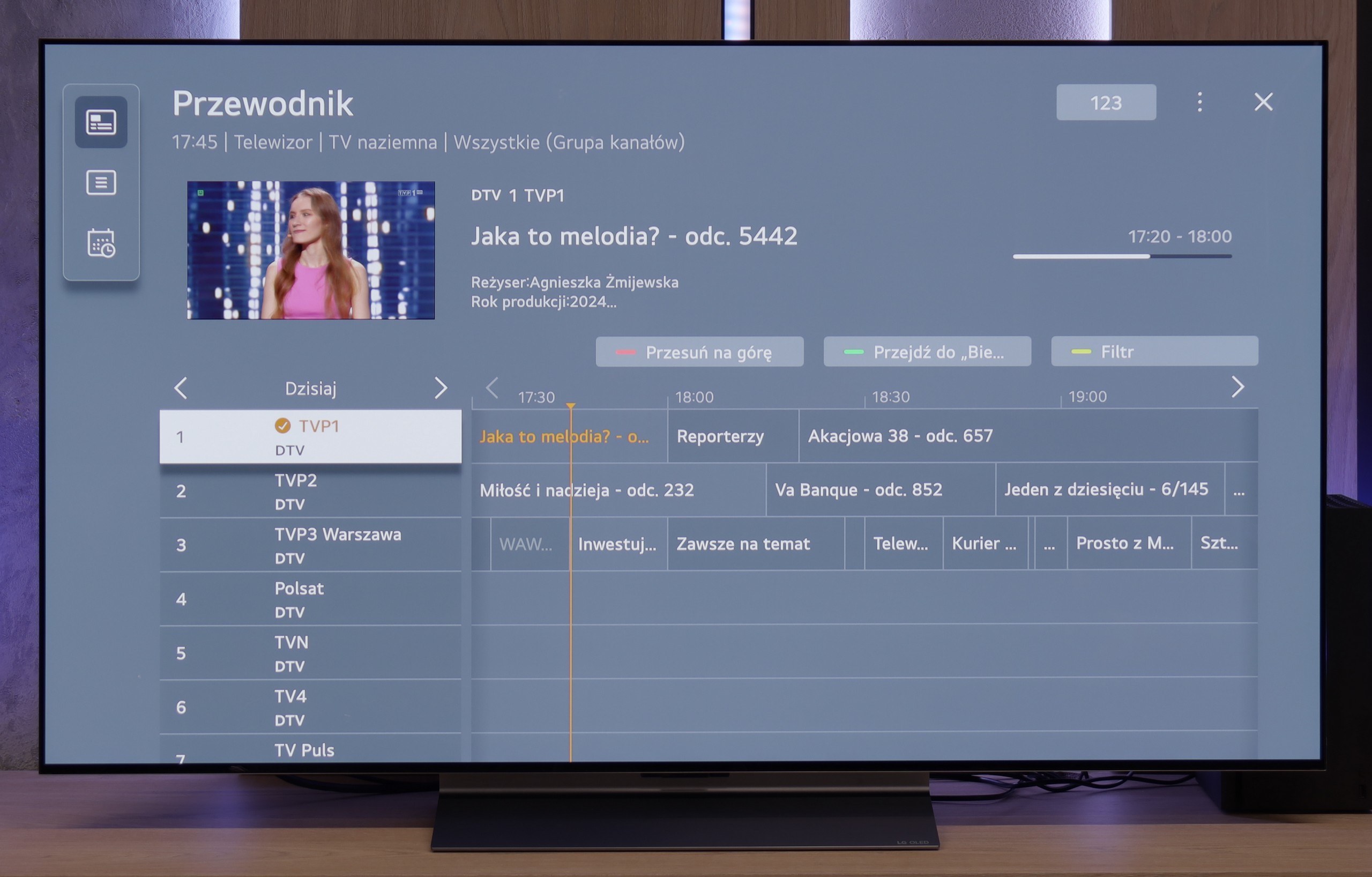
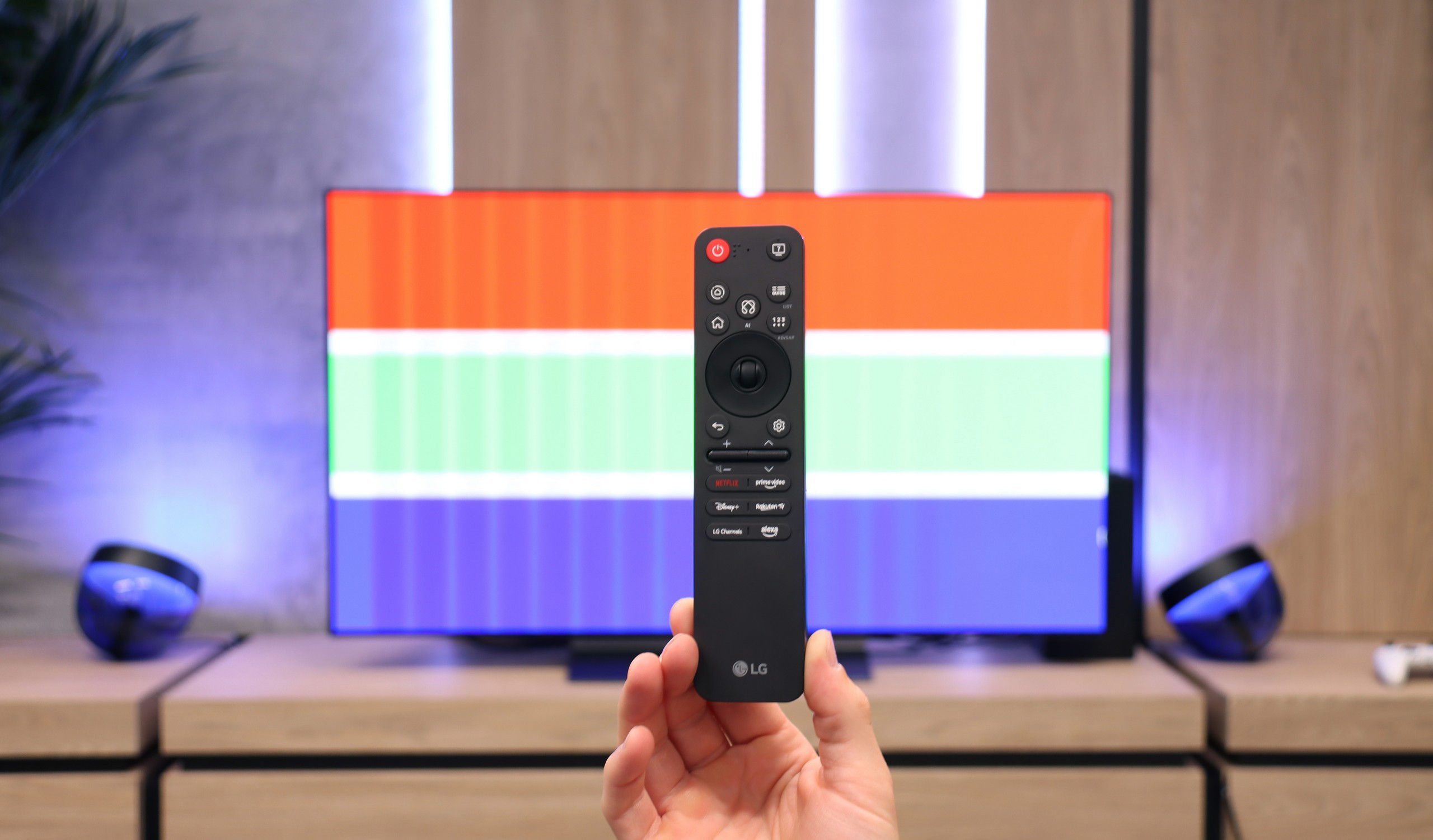
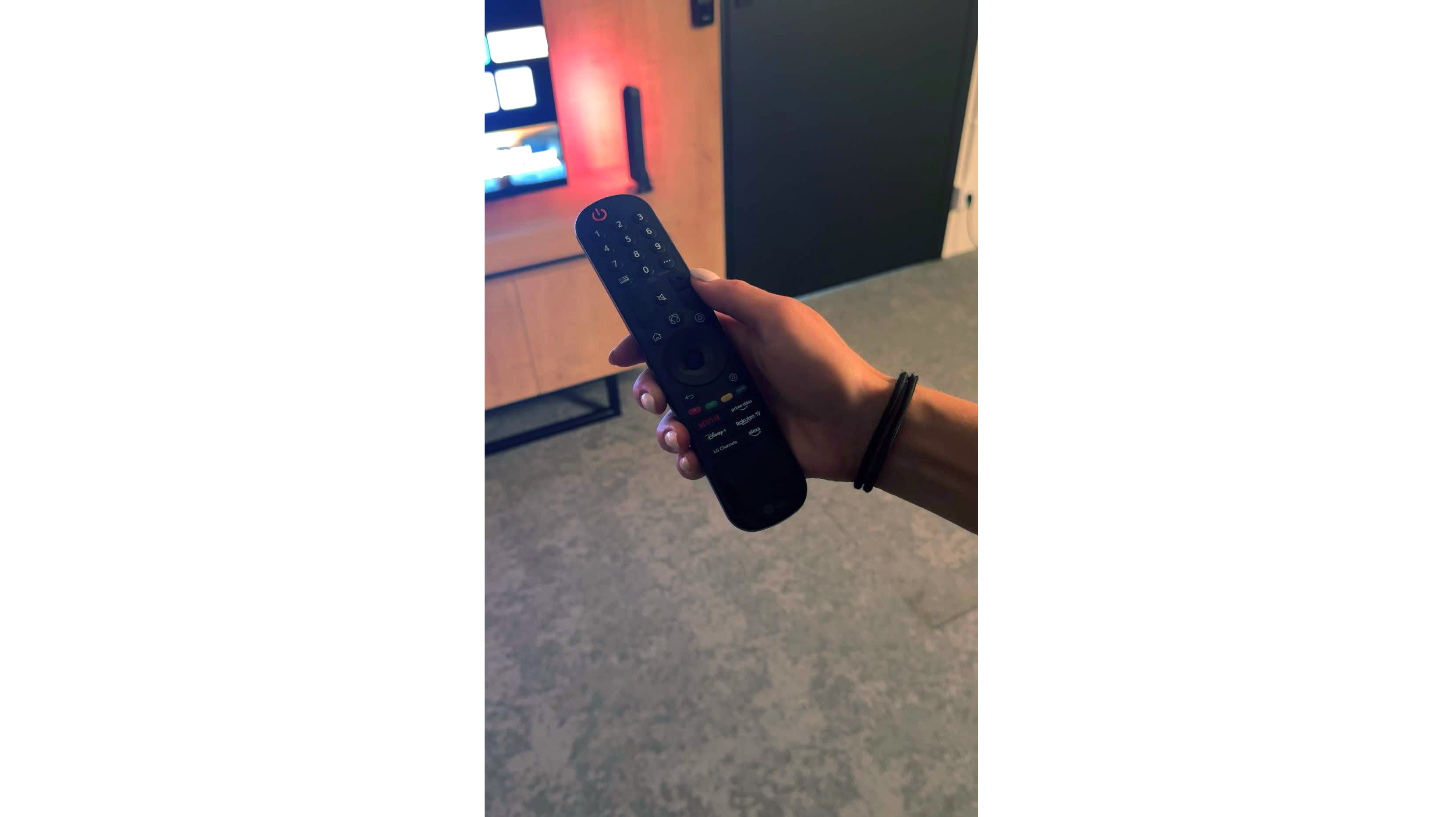
It’s hard not to mention the biggest differentiator of the manufacturer’s TVs first. We’re of course talking about the colorful Ambilight backlighting, which is placed on the back of the device and displays colours customised to what’s happening on the screen, often allowing for an even greater immersive experience. The operating system responsible for the TV’s functioning is Philips' proprietary system cleverly named TitanOs. It is definitely more closed off and limited in terms of app resources than is the case with this manufacturer’s TVs based on GoogleTv. Besides the lack of significant applications, its closed nature also reveals itself in another aspect. We won’t be able to do basic things like programming recordings or recording to USB. People using Apple devices may also feel disappointed by the absence of AirPlay, which allows for easy screen streaming. Fortunately, there is an option to connect a keyboard and mouse for easier navigation through the TV’s menu. It’s worth mentioning that there is the possibility of connecting headphones, but only wired ones. If we plug them in, we can also play audio through the TV’s speakers. It’s also worth adding that controlling the TV happens via IR, not Bluetooth, which is quite inconvenient these days.
In summary: TitanOs has quite a few “buts,” especially when we are aware users needing and using various streaming platforms. It’s rather an option for those limiting themselves to the so-called holy trinity, which is Netflix, YouTube, and CDA.
Classic TV Features:
In terms of classic TV functionalities, the LG C5 performs really well. Here, we have the option to record programs to USB from built-in DVB-T(2) tuners, support for teletext, an EPG channel list, and seamless pairing of headphones via Bluetooth. For many users, these are still very important elements of everyday TV use – and LG doesn’t fall short in this area, except for the PIP function. It is worth noting the topic of the remote, or rather... the different versions of the remote. In our test, we used the C54 model, which is equipped with the new version of the Magic remote. It somewhat resembles Samsung's minimalist approach – there’s no numeric keypad or "source" button, but it looks modern and is comfortable for everyday use. Conversely, other variants, such as C5ELB, may be sold with an older version of the remote – a more classic one, with more buttons and a numeric keypad. Some may consider it more practical, while others see it as outdated. In short: quite a bit of confusion, so it's worth checking the model suffix before purchase.
Smart TV:
Regardless of the version of the remote, we’re operating the same system – WebOS. This is one of the most enjoyable solutions in the Smart TV world. The intuitive menu, fast performance, and support for popular features, such as AirPlay, screen mirroring, or voice assistant, make the system perform very well in everyday use. Additionally, controlling the cursor using the gyroscope in the Magic remote remains one of the most convenient forms of navigation in TVs. There are really quite a few applications here – Netflix, Disney+, HBO Max, Apple TV, and many more. However, one must remember that this is not a system based on Android/Google TV, so it may happen that we simply cannot find some less popular app in the LG store.
Playing files from USB
8/10
8.8/10
Supported photo formats:
Maximum photo resolution:

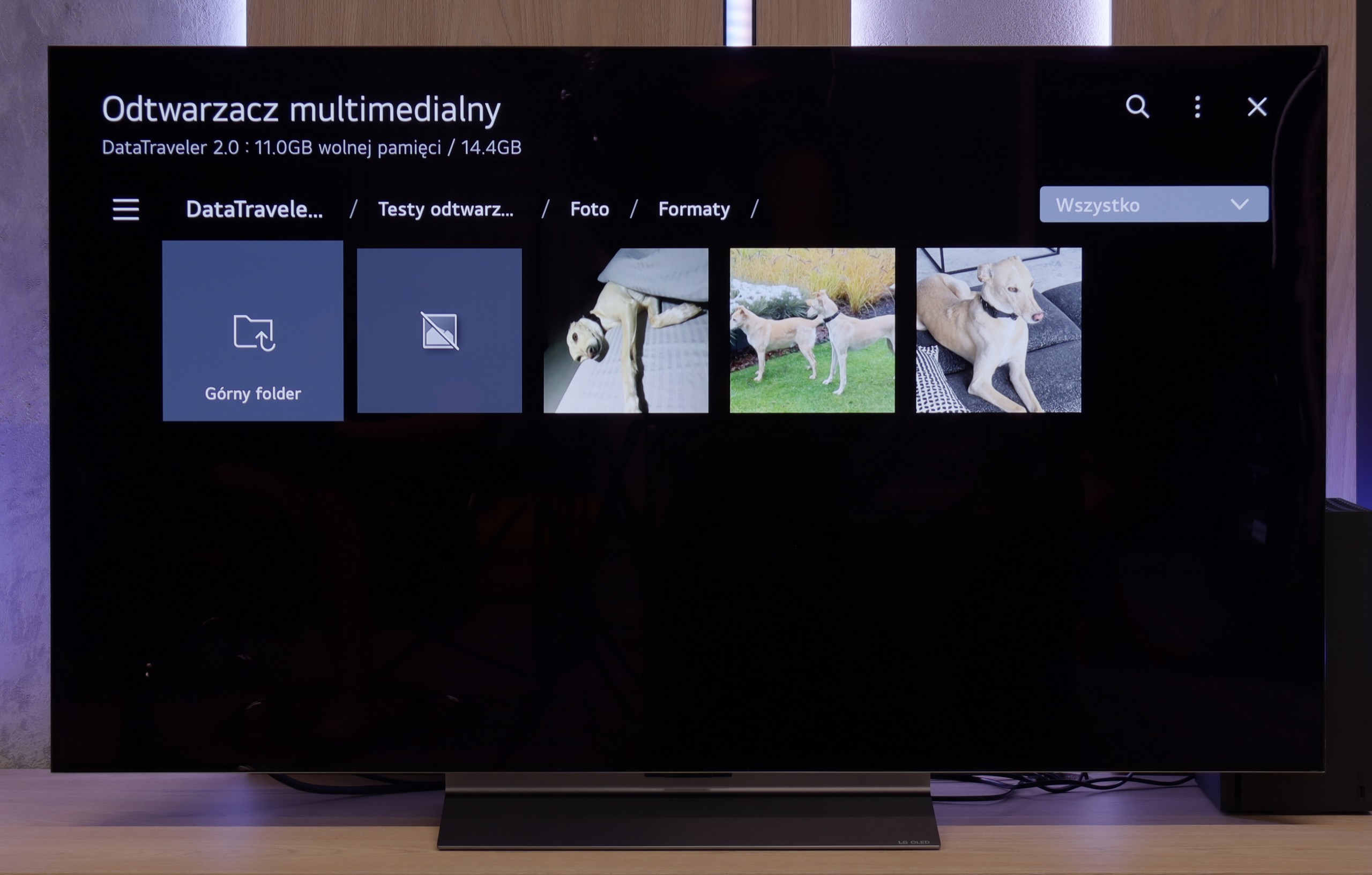
The default media player built into Philips PUS8359/12 offers quite a wide range of capabilities, but it also has its limitations. It plays virtually all video formats, with the obvious exception of Dolby Vision and the less obvious .asf, which is not commonly encountered. However, the issue lies in the lack of the H.265 HEVC codec at high bitrate. When it comes to photos, the player performs adequately, but it lacks support for some popular resolutions and formats, such as HEIC, used on Apple devices. The player performs best with audio, where it can be praised. Unfortunately, due to system limitations, there is no possibility to expand its features, which means we are left with what the manufacturer has provided.
The LG C5 is equipped with quite a decent built-in media player that should meet the expectations of most users. It supports popular video and audio formats, handles SRT subtitle files, and opens most graphic files without major issues.
The interface itself is fairly simple and intuitive – it doesn't surprise, but it also doesn't create difficulties in everyday use. Of course, it's not at the level of external players or apps from Google TV, but for basic playback of films from a USB drive or hard drive – it's more than sufficient.
Apps
6.2/10
9.1/10














































Sound
6.1/10
7.2/10
- Maximum volume--
- Dolby Digital Plus 7.1
- Dolby True HD 7.1
- Dolby Atmos in Dolby Digital Plus (JOC)
- Dolby Atmos in Dolby True HD
- DTS:X in DTS-HD MA
- DTS-HD Master Audio
The built-in audio system in the Philips PUS8359 consists of a basic connection of speakers 2x 10 W each. As you can probably guess, you can't expect too much from such a configuration. Nevertheless, if we don't exceed 50% of the maximum volume, it won't give us any negative thoughts. We definitely recommend connecting even cheaper soundbars. These, due to a range of codecs prepared by the manufacturer, will certainly work very well. It's worth noting the implementation of Dolby Atmos and DTS-HD Master Audio.
For such a slim television, the LG C5 surprisingly offers quite good sound quality. The thin body manages to house a set of decent speakers that produce clear audio, with well-defined details and – surprisingly – a light but perceptible bass. For everyday viewing, that's more than sufficient, and in many cases, it may even deliver a pleasant surprise. It's just a pity that this year LG decided to completely abandon support for DTS codecs. For most people, this won't be an issue, but if someone uses Blu-ray discs and enjoys that format – especially in its more advanced versions – they may notice its absence. In such cases, an external receiver or soundbar with appropriate audio support is the solution.


